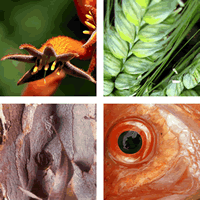DECLARED PEST RATE
What is a DPR and how does it relate to an RBG?
Under the Biosecurity and Agriculture Management Act 2007 (BAM Act) the State can raise a Declared Pest Rate (DPR) from landholders in specific areas, and matches the funds raised from the rate dollar-for-dollar.
The combined funds are made available to Recognised Biosecurity Groups (RBG), who provide support to landholders to manage widespread and established declared pests. Under the BAM Act landholders are responsible for controlling declared pests on their own land.
RBGs conduct pest management awareness initiatives and education as well as coordinate and undertake pest management activities across land tenures.
Public funds provided to RBGs must be spent on activities detailed in each RBG’s annual Operational Plan, which is developed in consultation with the RBG’s local community.
RBGs must produce an annual report which details what the DPR and the State’s matching funding were spent on in an operational year. These are publicly available on this website.
What is a declared pest?
A declared pest is an animal or plant species that causes unwanted impacts on people, the economy or environment, and has therefore been declared under the Biosecurity and Agriculture Management Act 2007.
Declared pests are either not allowed into WA, or if they have become widespread and established, are subject to control or keeping requirements to minimise impact and spread, as it is often not possible to eradicate these pests.
This is why landholders and managers must be involved in the ongoing control of these pests on their property, in order to reduce their negative impacts on the landscape. Examples include narrow leaf cotton bush, Paterson’s curse, blackberry, cape tulip, bridal creeper, some cactus species, wild rabbits, feral pigs, foxes and wild dogs.
The presence and impact of these pests will vary across the State.
How long has the DPR existed?
The State has been collecting a DPR in WA’s pastoral regions since 2014. Prior to that, it was collected as the Agriculture Pest Rate under the Agriculture and Related Resources Protection Act 1976.
The DPR and RBG model has since been extended to the agricultural and south west regions of the State.
Does everyone in Western Australia have to pay a DPR?
No. The DPR is raised in prescribed areas, typically defined along local government boundaries.
The properties that are rated in each of these prescribed areas varies across the State.
The DPR is only raised in areas where there is an RBG.
How do I change my address?
Please call RevenueWA on (08) 9262 1199 or for country callers on 1300 368 364.
RECOGNISED BIOSECURITY GROUPS
What is an RBG?
Recognised Biosecurity Groups (RBGs) are community-based independent associations that are recognised by the Minister for Agriculture and Food under section 169 of the Biosecurity and Agriculture Management Act 2007 (BAM Act).
The RBG model is based on a community led and coordinated approach, which is the most effective way to manage widespread and established declared pests.
RBGs bring together and support landholders to undertake action to manage those declared pest animals and plants that are of greatest concern to their communities. They also provide opportunities for landholders to coordinate their activities with others.
Under the BAM Act landholders are responsible for controlling declared pests on their own land. However, pest management can be challenging for individuals when the species is widespread and crosses boundaries, and is best addressed when communities, industries and government are working together.
The provision of public funds to RBGs (from the DPR and matched State funds) is the State Government’s approach to supporting landholders to fulfil their legal obligations.
How do I get in contact with my local RBG?
Email your local RBG for contact phone numbers, or you can visit their website.
What exactly does an RBG do?
The work of each RBG will vary according to their geographical location, declared pest priorities, focus and strategy. In summary, they can:
Educate
RBGs help landholders understand their legal obligations under the BAM Act to manage declared pests on their own land, and how an RBG can support them to do so.
Support
RBGs provide landholders with knowledge, skills and the confidence to carry out control activities successfully on their land.
Coordinate
RBGs can help landholders to coordinate their activities on a large scale to make long-lasting impacts.
Plan
RBGs develop annual operational plans that detail management strategies and the budget needed for the year. These are based on local declared pest priorities, which are developed with input from landholders and their communities.
How can I get involved with my local RBG?
Visit our web pages to find out if you have an RBG operating in your area, and contact them directly to learn about planned activities and opportunities to be involved.
What are examples of what my rate could be spent on/ how do RBGs use these public funds?
- Training in:
- various methods of control
- pest identification
- chemical use and certification.
- Opportunities to participate in seasonal control programs, such as community fox shoots, rabbit virus release and community baiting days.
- Subsidies for bait, restricted chemical product permits and chemicals.
- Provision of materials and equipment needed for pest management, through lending or hiring of equipment for landholder use.
- On-ground activities to complement landholder efforts, such as organising or engaging contractors to carry out wild dog or feral pig control.
- Displays at local and regional field days and shows.
- Websites, social media, newsletters, brochures, annual reports.
- Meetings, presentations, and information sessions.
- Annual awareness reminders.

